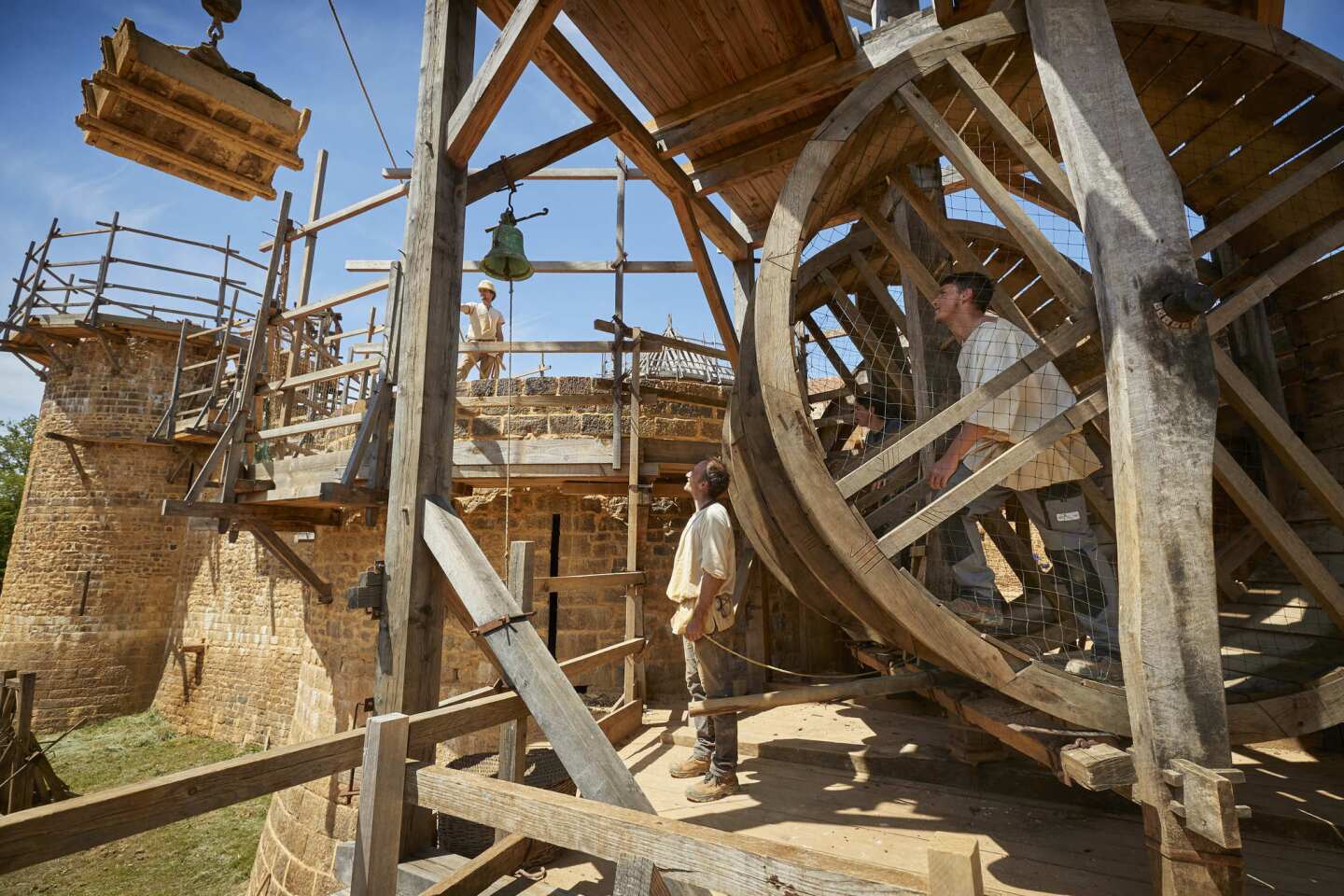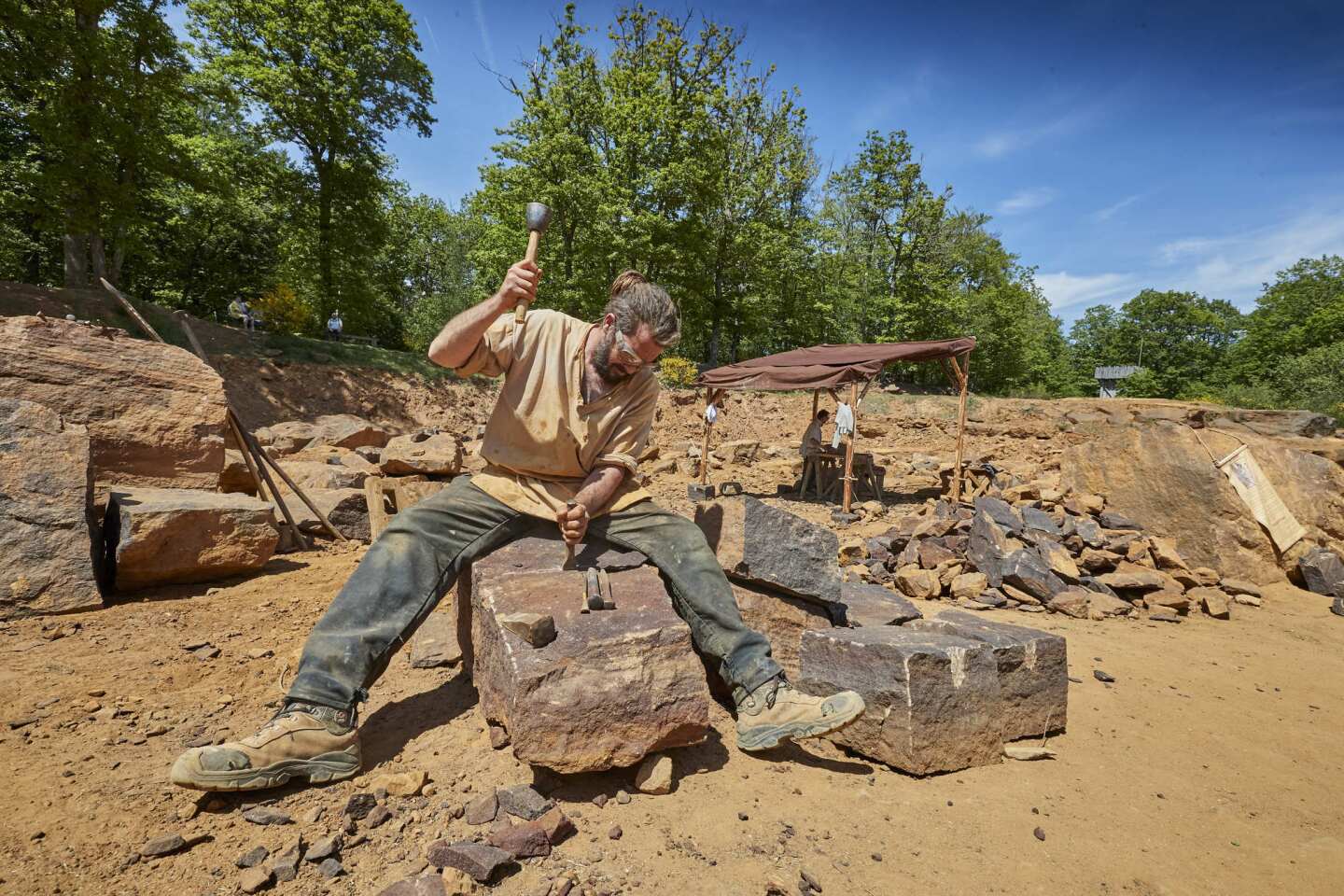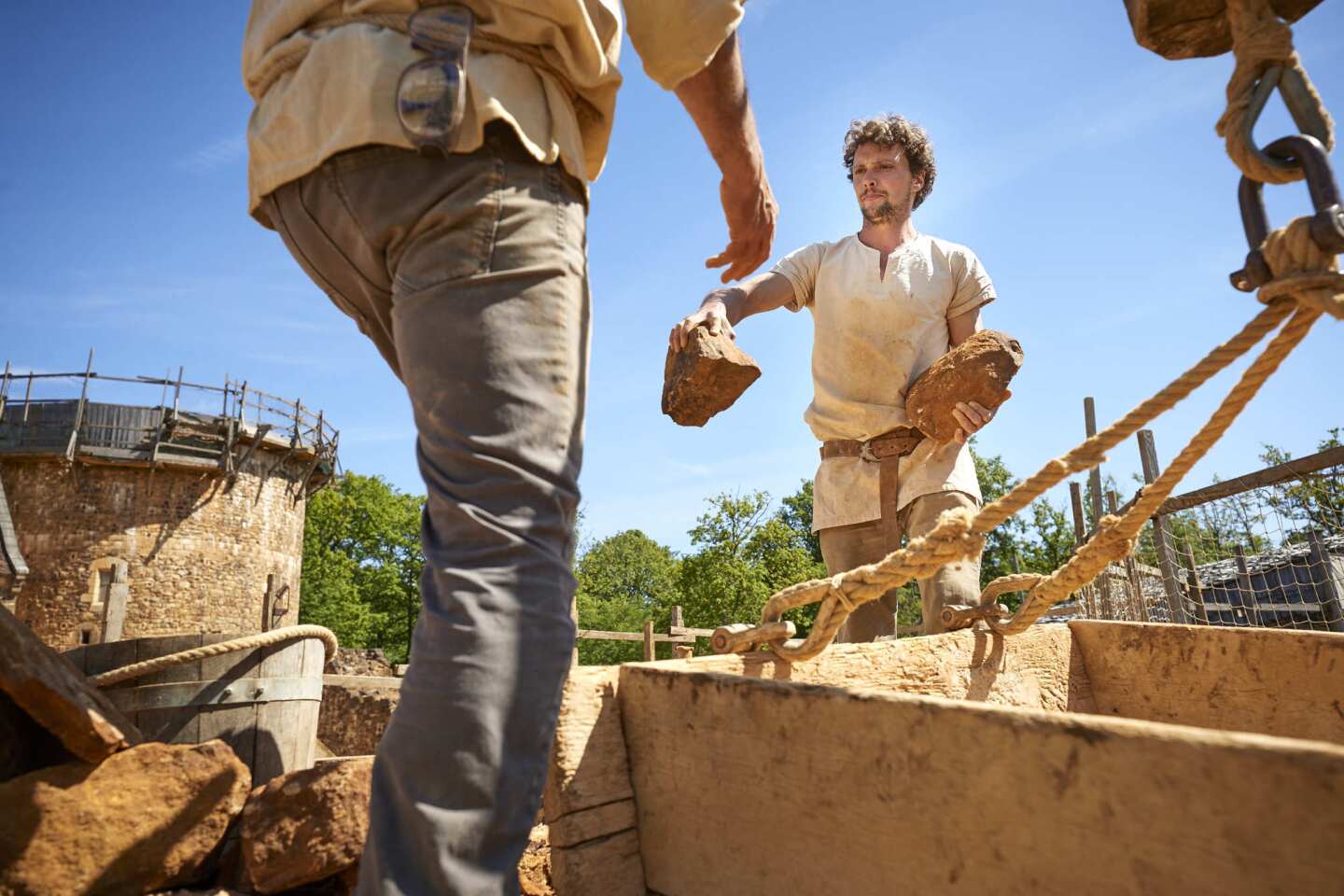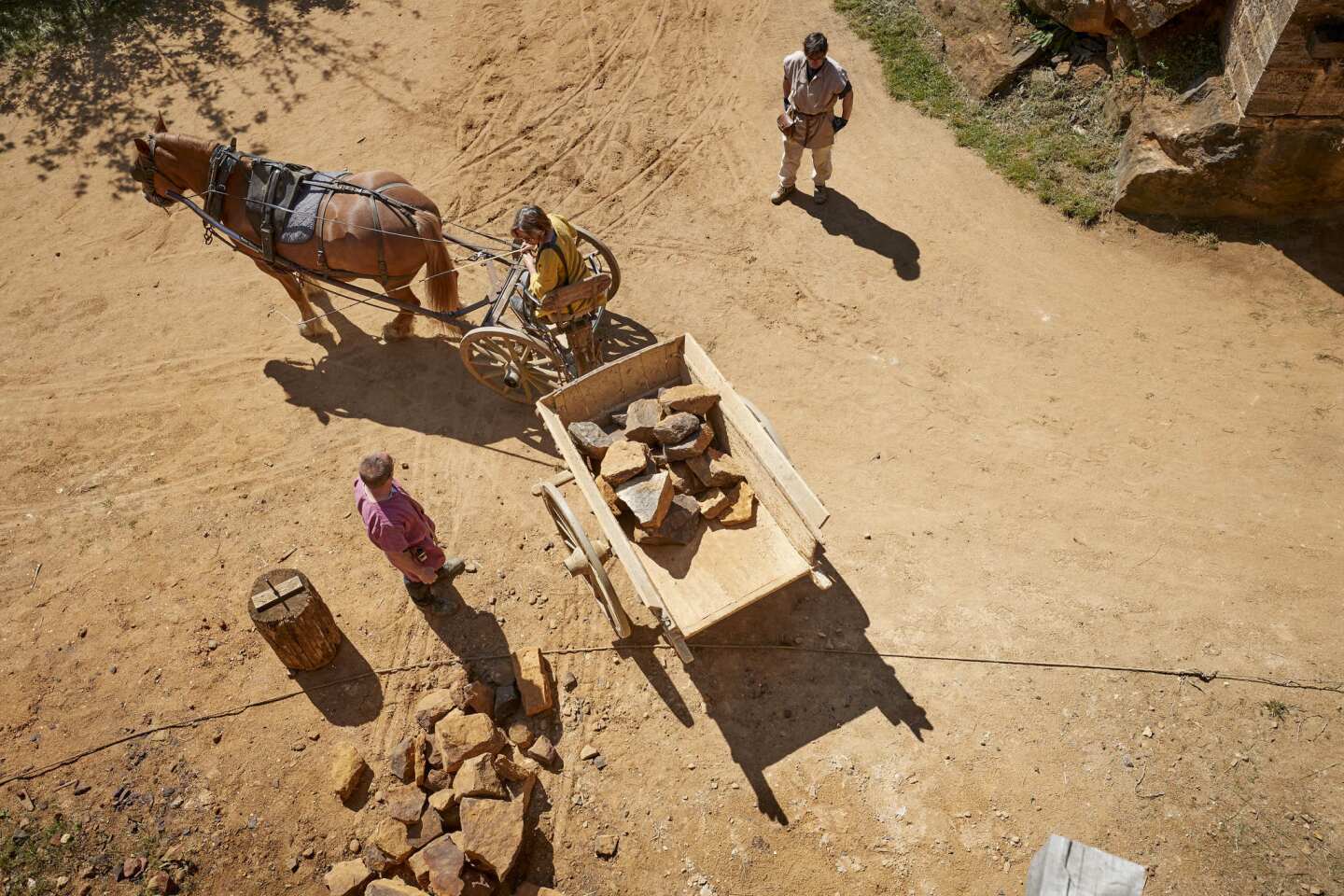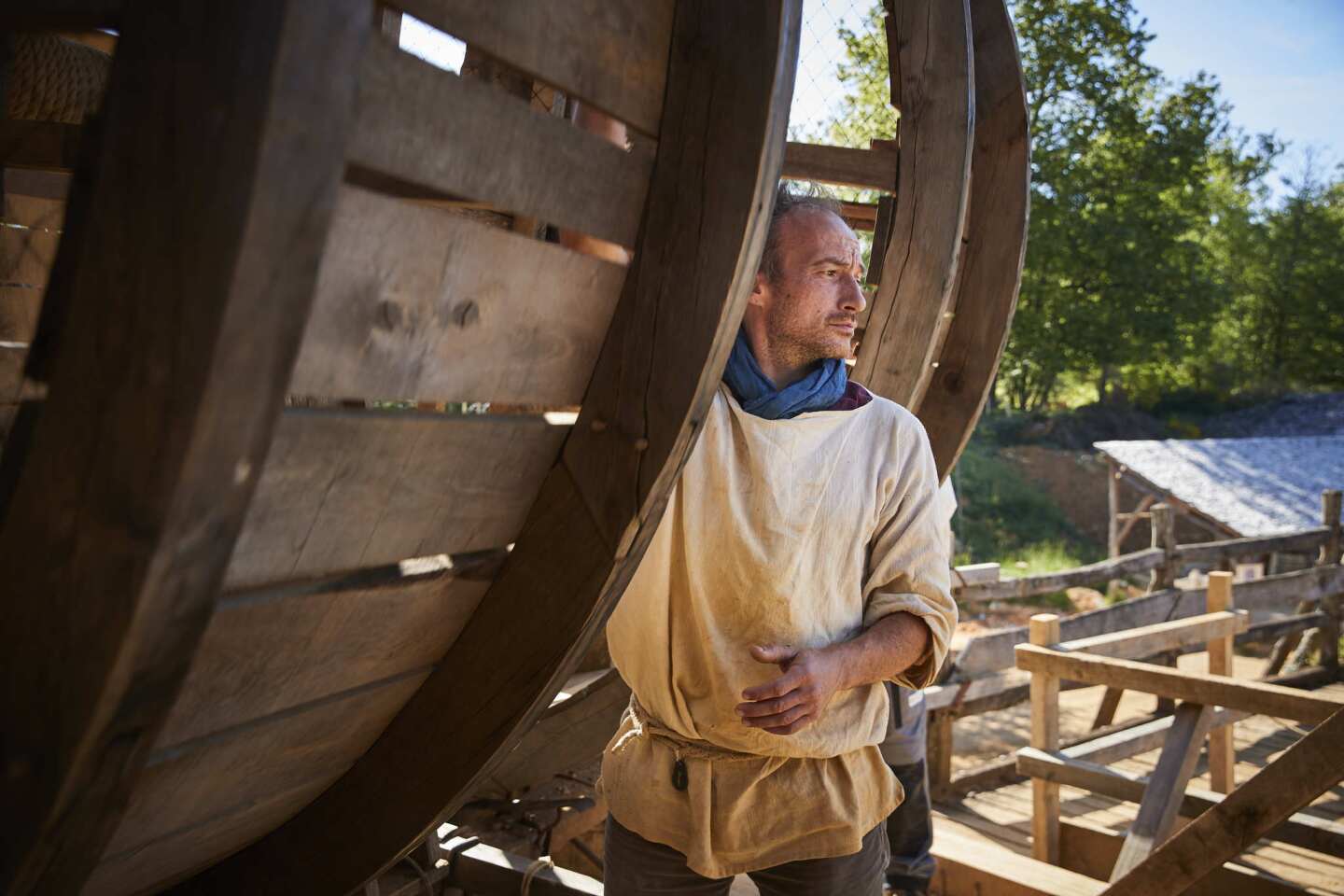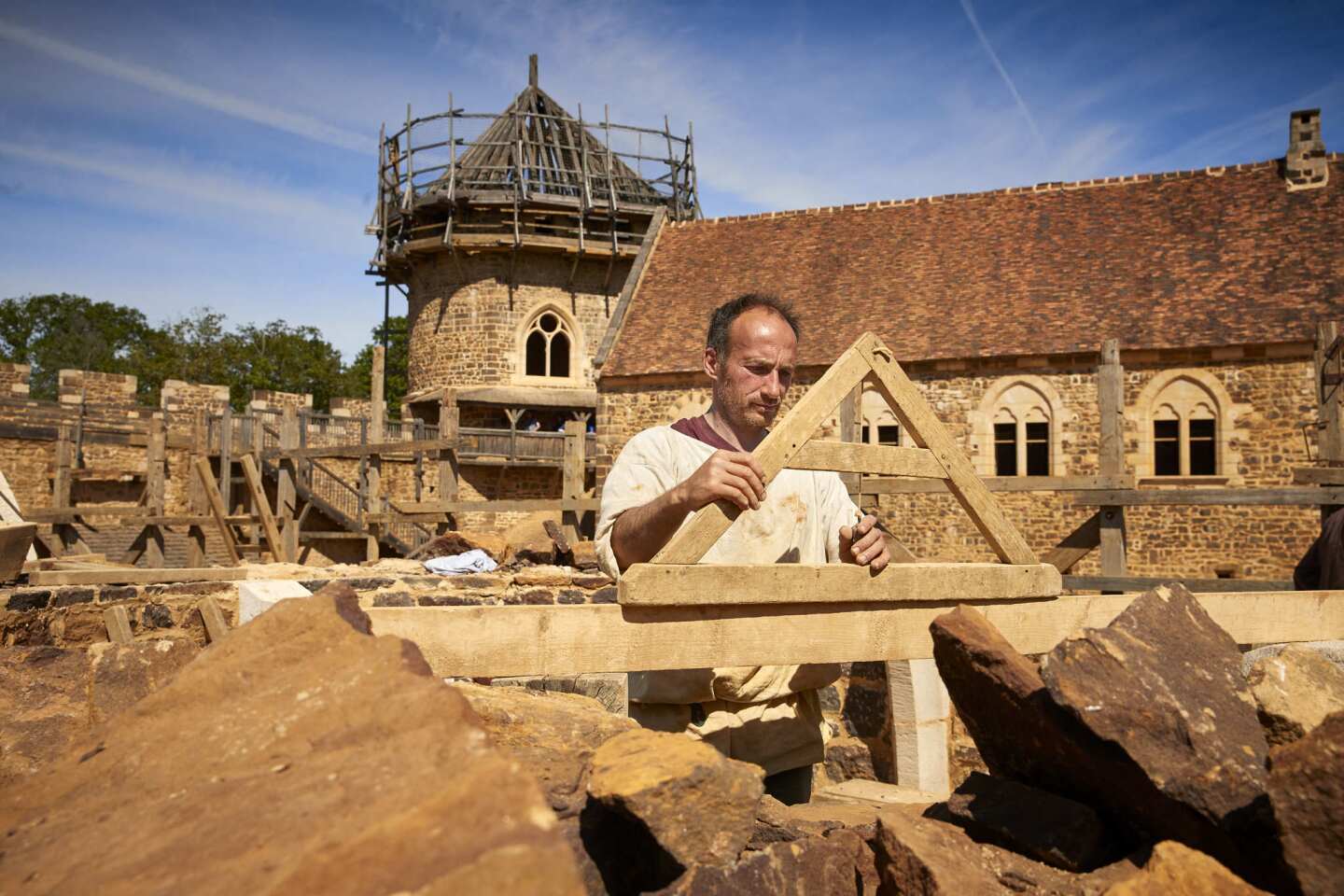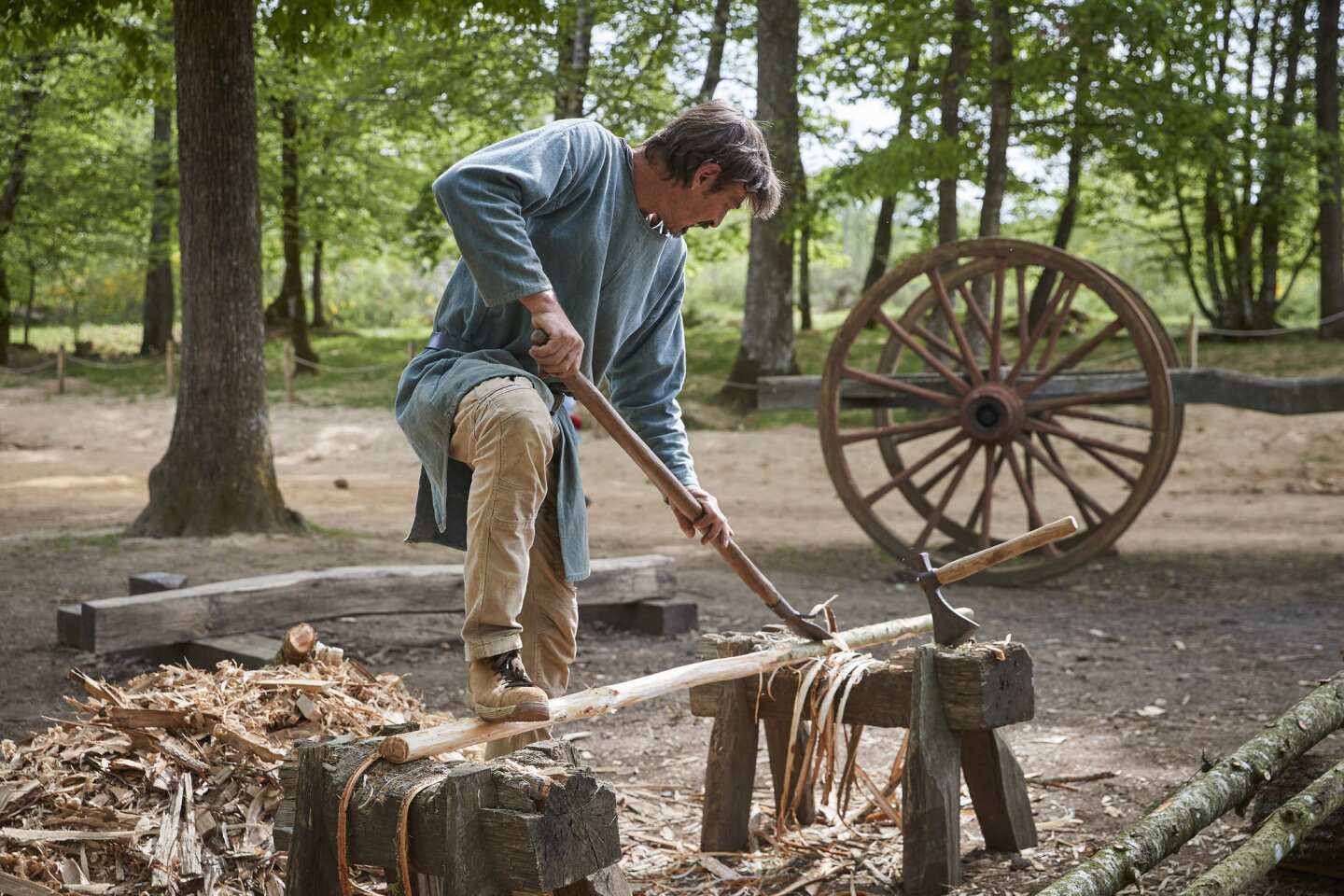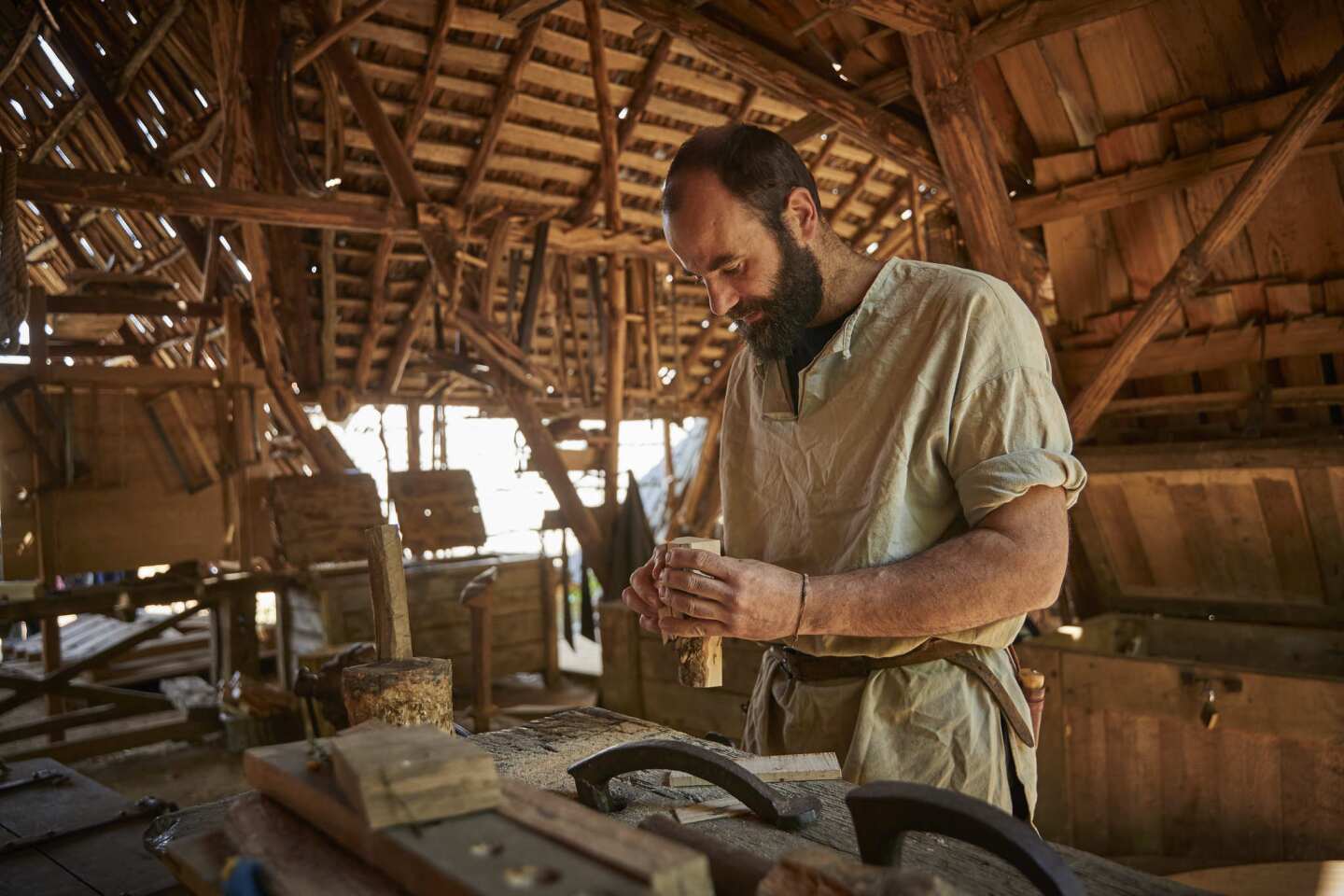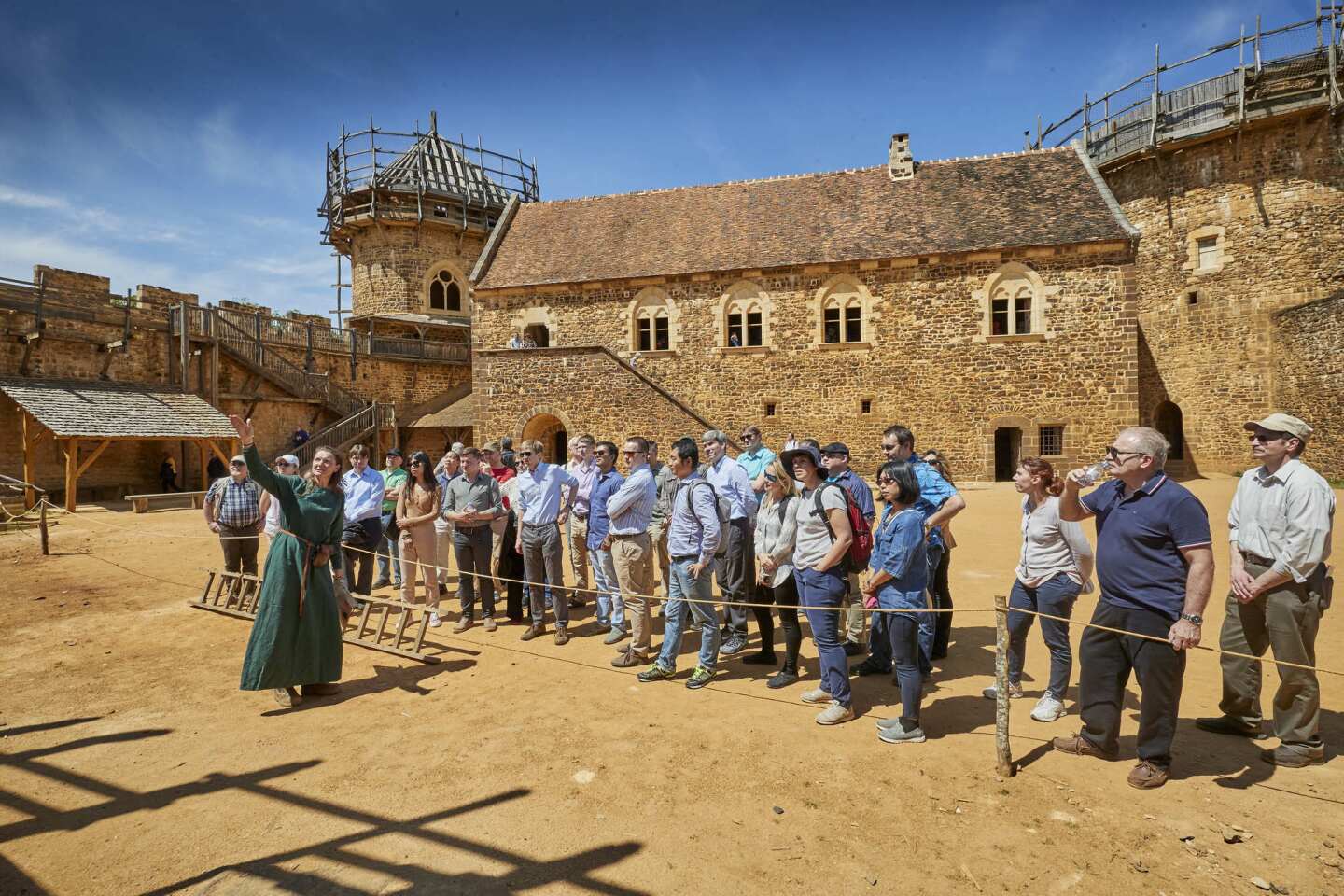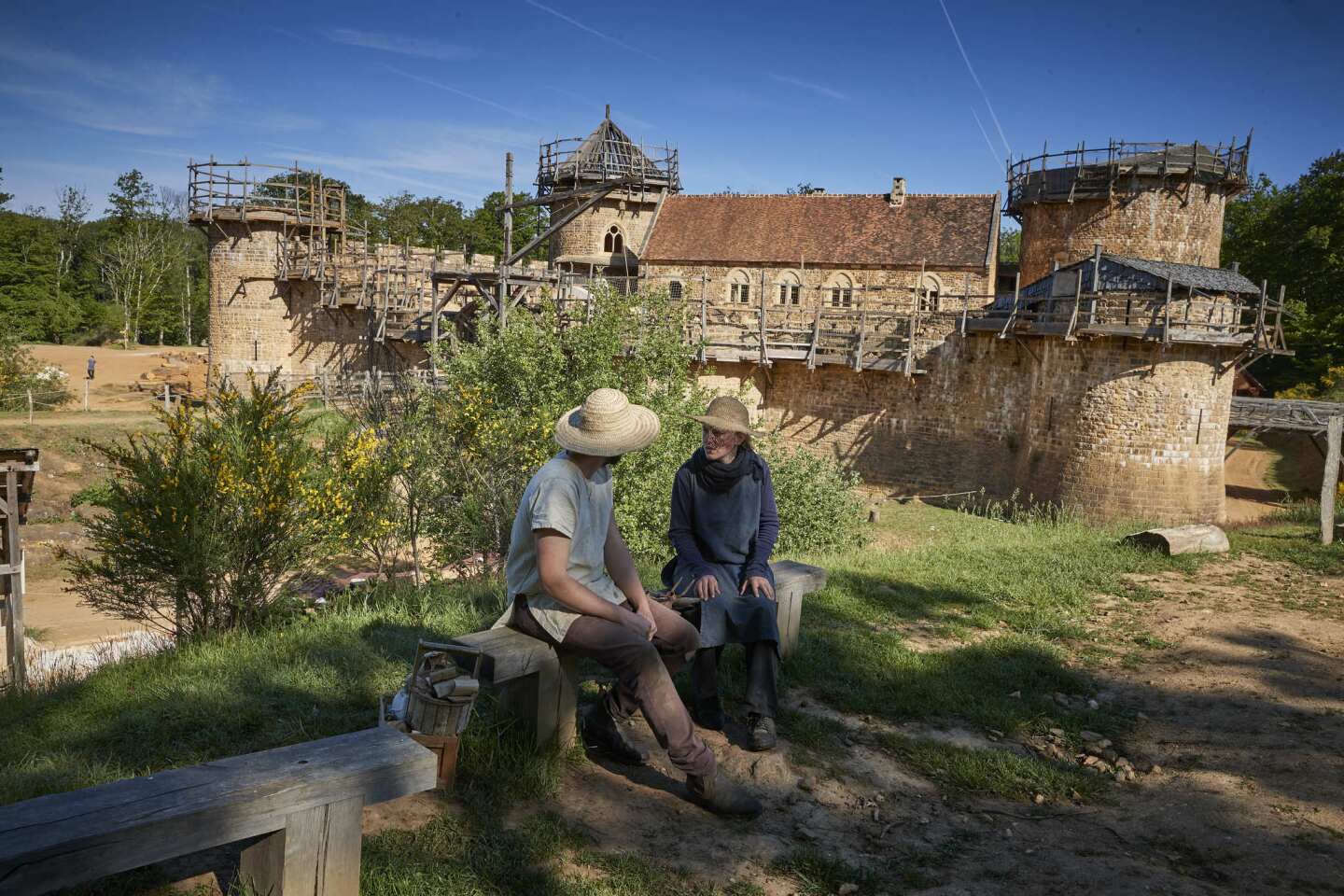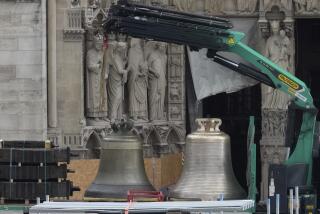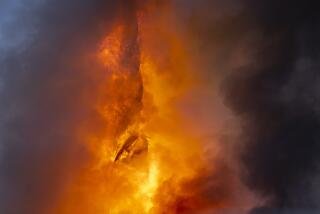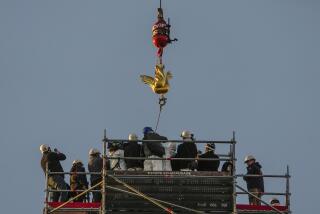A medieval castle in France could be Notre Dame’s salvation
In a forest clearing in central France, history is being made. Or more precisely, remade.
This is the Guédelon medieval construction site, a back-to-the-future project that involves recreating a 13th century castle from scratch.
How hard can that be in an age of electricity, power tools and hydraulics? Extremely, if you decide to do it using the methods and materials in use in the Middle Ages, as workers at Guédelon have been doing for the last 20 years.
Now the traditional skills being rediscovered here are in demand for the reconstruction of Notre Dame Cathedral, ravaged by fire in April.
The inferno reduced the cathedral’s roof, partly made with oak from the 12th century, to dust. Flames also consumed the 19th century spire, which collapsed and crashed through the Gothic stone vaulting. At the heart of the blaze, firefighters estimated, the temperature rose to up to 1,500 degrees Fahrenheit.
Since then, arguments have raged as to how to restore Notre Dame. Traditionalists want the cathedral — listed as a United Nations World Heritage site — rebuilt as it was. Modernists have other ideas. When French President Emmanuel Macron said he wanted Notre Dame repaired in five years and suggested he was open to a “contemporary gesture,” imaginations ran wild as architects dreamed up increasingly fabulous plans for glass and steel spires; a forest garden in the roof; a massive swimming pool.
Francesco Bandarin, former assistant director-general for culture at UNESCO, finds the debate “odd.” “I don’t understand it at all,” he says, pointing out that once a building has been declared a U.N. world monument, the international body’s rules require it to be restored largely as it was.
“There are rules … and there can be no debate about them. This should be made clear, otherwise there is a risk that anything goes, including gardens and swimming pools,” Bandarin said. “Of course, these are charters, not laws, but France has signed them.”
Maryline Martin, Guédelon’s owner, agrees. “How can we even think of replacing the incredible work of Notre Dame’s builders with a swimming pool?” she says. “What a crazy world. Notre Dame belongs to everyone, religious or not, French or not, Parisians or not. And we have just one duty: to transmit it to our children and grandchildren.”
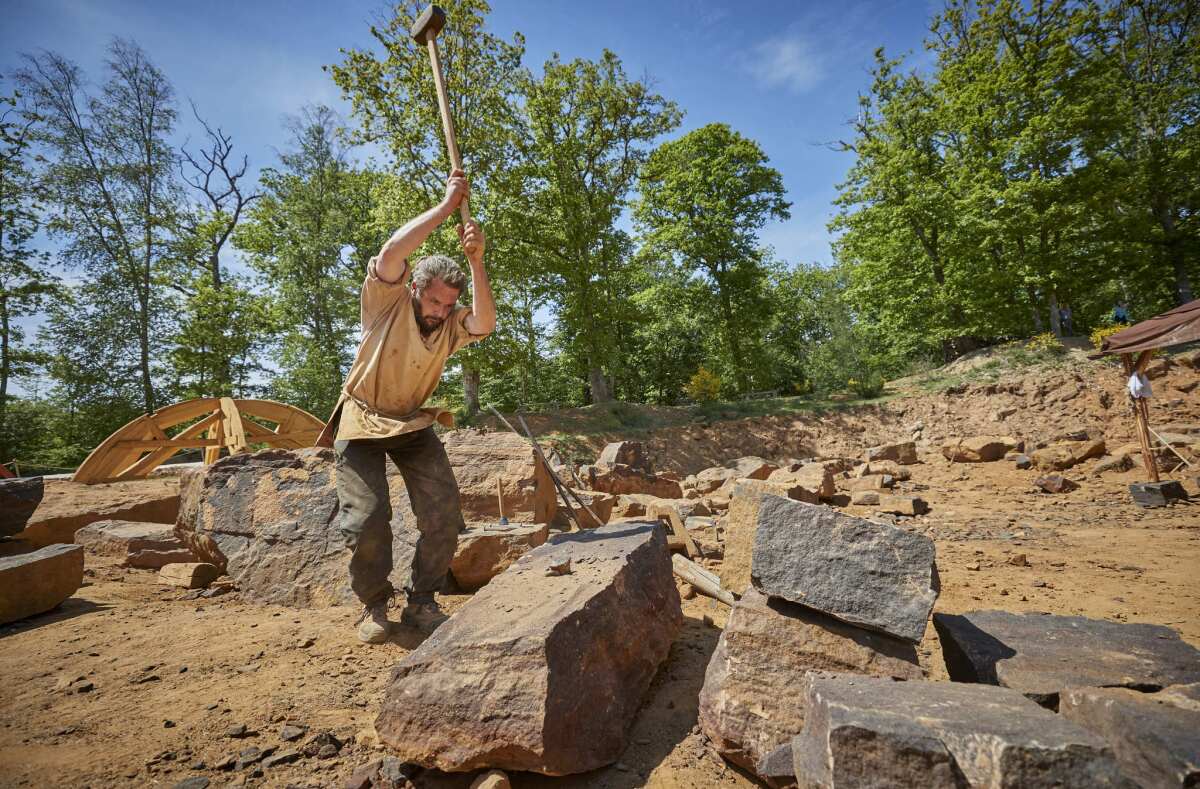
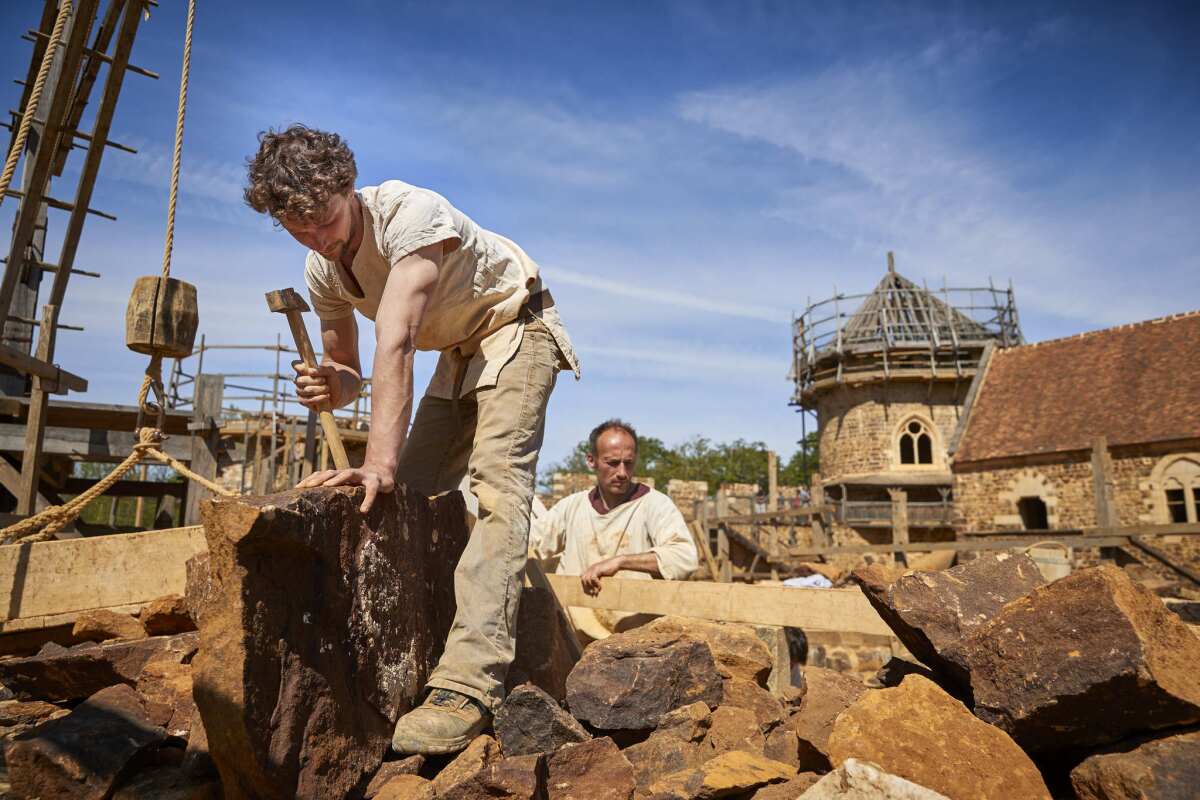
Back at the time-warp that is Guédelon, the year is 1250 and the imaginary Guilbert Courtenay, a minor nobleman, has been given a royal “license” to build a modest castle in recognition of his loyalty to King Louis IX. The scientific committee overseeing the project set it in a specific period to help with historical accuracy.
On site, quarrymen in rough linen tunics hew massive chunks of sandstone from rust-colored earth. Stonecutters chip and shape limestone from a nearby quarry, with hand-forged tools. Workers tread a wooden hamster-wheel attached to pulleys to lift the massive stones high enough to be fitted into walls with mortar made of slaked lime and sand. Ax-wielding carpenters hack at tree trunks to create the castle’s roof beams — a single beam from the heartwood of each tree.
At the forge, blacksmiths heat and hammer iron for nails, while complex geometric calculations are done with a thirteen-knot rope and a stick in the dust.
When the Los Angeles Times visited, masons were building two Gothic arches above the gatehouse with room for the portcullis, but no drawbridge: Courtenay is a minor aristocrat and hasn’t the money for one.
“The rule is that we do only what they did at the time. We take what we know from documents, and when we don’t know we have to guess and try things out,” says Sarah Preston, an English guide at Guédelon.
She points to a stone window opening covered with translucent goatskin parchment. “Glass was very expensive at the time, so Courtenay probably couldn’t afford it.”
Since it opened in 1998, Guédelon has been built by trial and error. One learning curve is immediately evident: the red-brown clay tiles on the right of the chateau roof are blackened in places. “They were part of a first batch left in the oven too long,” says Preston. Again, it was decided Courtney could not afford to throw them away.
Climbing from the wooden scaffolding, Florian Renucci, Guédelon site manager and master mason, says learning by mistakes is what the project is about.
“Very little was written down in the medieval period, so we are trying to work out what they might have done. Sometimes it works, sometimes it doesn’t. By making mistakes we learn.”
He says Gothic architecture, which originated in 12th century France and gave the world flying buttresses and gargoyles — and Notre Dame — cannot be matched even today.
“It was an apogee in architecture. To build anything higher we had to wait for the 20th century and modern materials like metal and concrete,” Renucci says. “But look at Notre Dame; the wood burned but the stone structure remained upright, which is incredible. The technology of the 13th century stood firm and didn’t collapse.”
Martin, who dreamed up the Guédelon project, describes it as “experimental archaeology” except instead of digging down to uncover the past, her teams are building upwards. She says the whole idea was considered crazy when she started. Now the site is a major tourist attraction drawing 300,000 visitors and hundreds of volunteer workers every year.
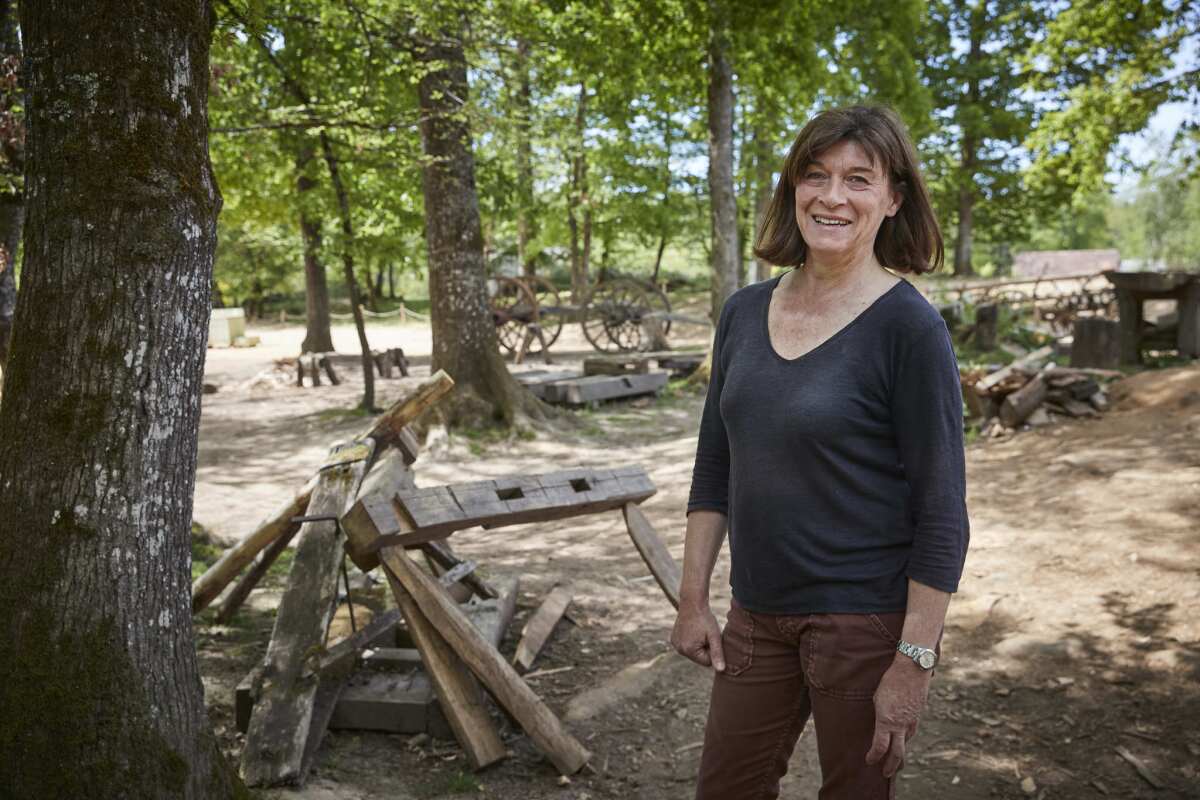
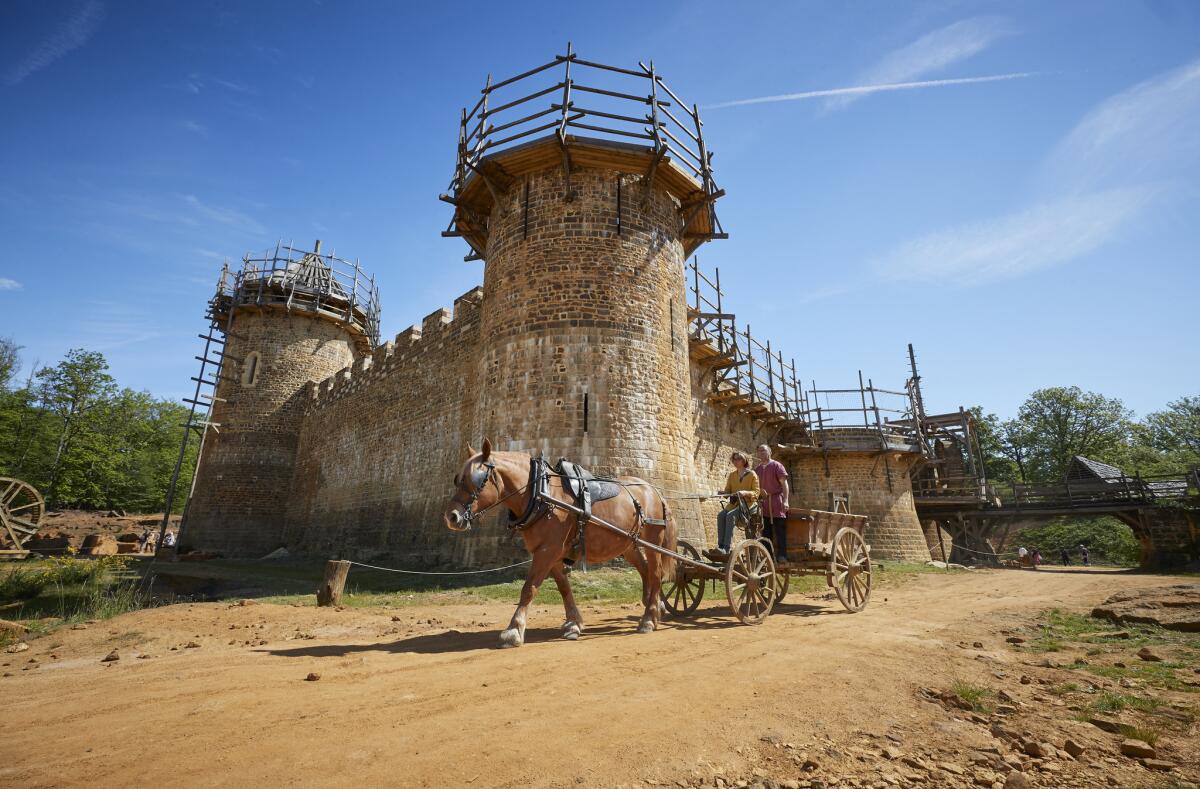
Even before the Notre Dame fire, Martin was planning to scale back tourism at Guédelon to open an artisan trades school offering a fully-recognized diploma in historical renovation. Post inferno, she says, it is even more necessary.
“Notre Dame is a symbol of the skills we have forgotten. There’s something of the builder in all of us. If you give children stones they will construct something,” she says. “We need to create this vocation in youngsters who don’t know what to do in their professional lives. Here we work with our hands, head and heart, and it’s not a job for the stupid.”
Jean-Claude Bellanger, of the Compagnons du Devoir — Companions of Duty — a trades’ guild, agrees France has the savoir-faire, or know-how, to restore Notre Dame to its original state but says hundreds more stonecutters, masons, carpenters and roofers are needed to repair and maintain the cathedral and the country’s estimated 40,000 historic monuments, many dating back to the Middle Ages.
Despite youth unemployment of up to 20% in parts of France, few youngsters are drawn to apprenticeships in artisan trades, he says. “Unfortunately, our society and education system don’t value the manual trades. We only suggest them to young people having difficulty at school, so it’s seen as a failure.”
“We need to have an open workshop in front of Notre Dame to showcase these trades and recognize their value; if you learn one, it’s a job for life,” Bellanger says.
Toendra Schrauwen, 25, from Belgium, laments what he calls the “devaluing of manual trades.” Schrauwen studied architecture but gave it up to retrain as a stonecutter and has worked at Guédelon for three years.
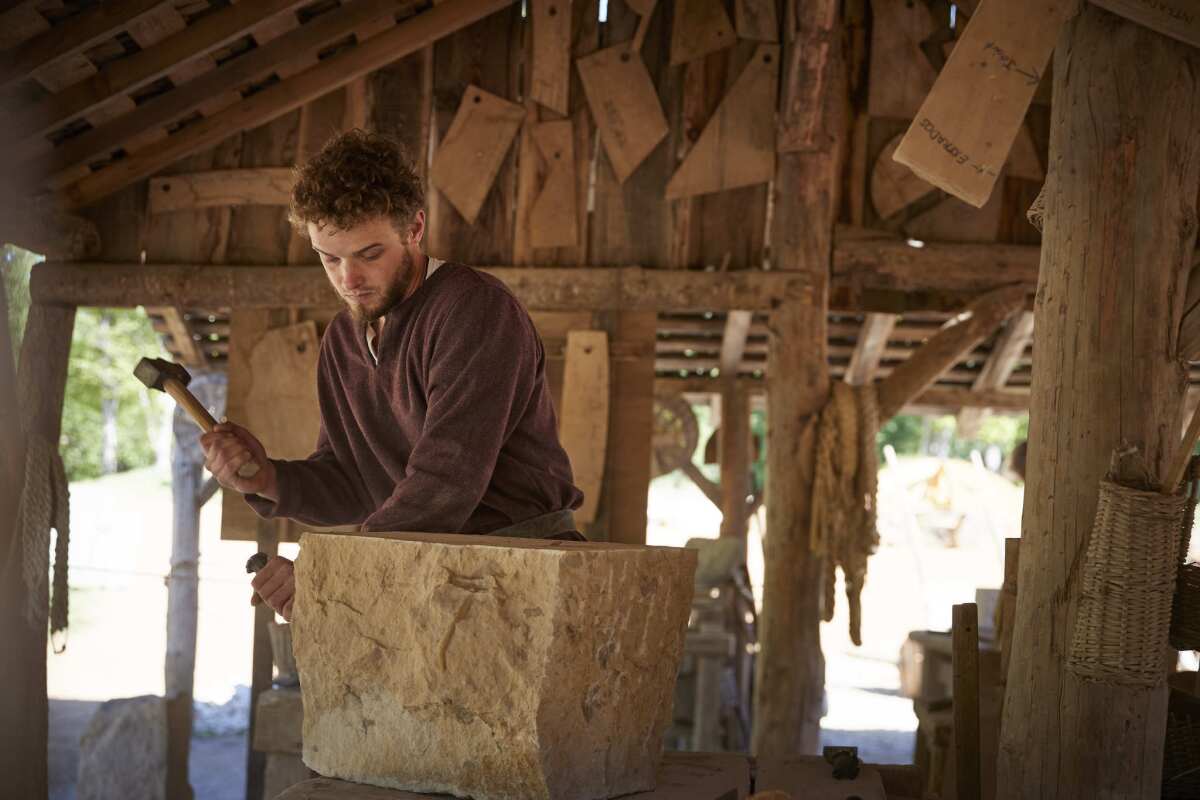
“We’re working with our hands and heads. All of these skills involve a form of geometry and calculations. Even in the Middle Ages there were engineers.”
Schrauwen admits his parents were “not pleased” when he gave up his formal studies. “It was a difficult time,” he says. “But now my mother sees what I’m doing and how passionate I am about it, she’s happy.”
Stephane Boudy trained as a baker, then an electrician, until discovering his vocation as a carpenter at Guédelon where he has been since 1999.
“This place is a magnificent showcase for traditional skills. In the Middle Ages these skills were more valued than now,” he says. “When we heard people say after the Notre Dame fire that nobody knows how to build like that these days, we thought, hang on, we do, and we can train people to do it.”
In Paris, two hours by road to the north, the government is forging ahead with its controversial international competition to design a new spire for Notre Dame, and Macron is still insisting the cathedral can be restored in five years. Around 1 billion euros has been collected in donations to repair the fire damage.
Frédéric Epaud, a researcher at the National Centre for Scientific Research and a member of Guédelon’s scientific committee, says it would be “spectacular and very moving” to set up an open-air building school outside Notre Dame during the restoration with carpenters working “according to the ancestral rules of the craft.”
Martin will discuss this with officials tasked with overseeing the Notre Dame restoration who are expected to visit Guédelon. She is particularly anxious any restoration not be rushed.
“We have been consulted for our point of view, which is that Notre Dame should be restored as it was before the fire. I believe the majority of people want this done. But it’s a massive job. Every stone has to be examined for damage and cracks, and that will take time. To hurry would be a mistake,” Martin says.
“Notre Dame’s message to us here was that more stonecutters and carpenters are needed and we can help find them and train them. Our job is to transmit the skills we have learned.”
Renucci nods. “We have to respect the spirit of the 12th century builders. What would be really modern would be to do it as they did back then,” he says. “If we do, there’s no reason Notre Dame won’t last another 1,000 years.”
Willsher is a special correspondent.
More to Read
Sign up for Essential California
The most important California stories and recommendations in your inbox every morning.
You may occasionally receive promotional content from the Los Angeles Times.
